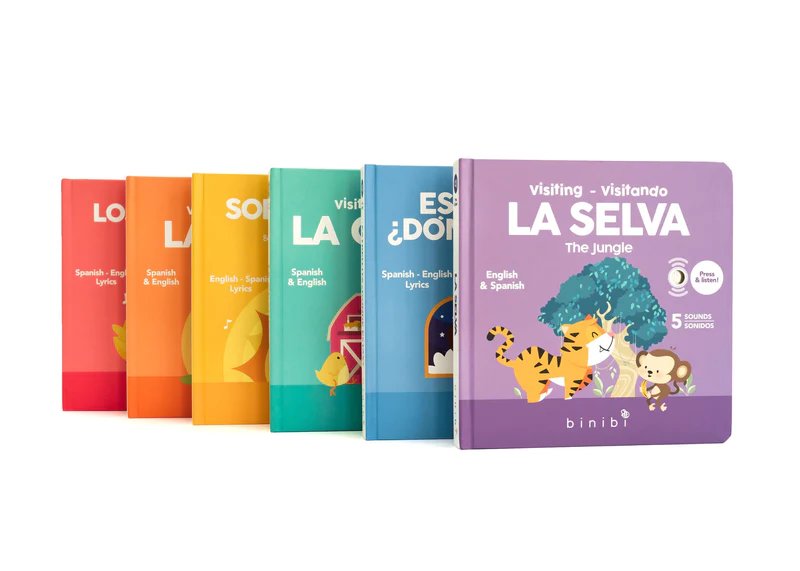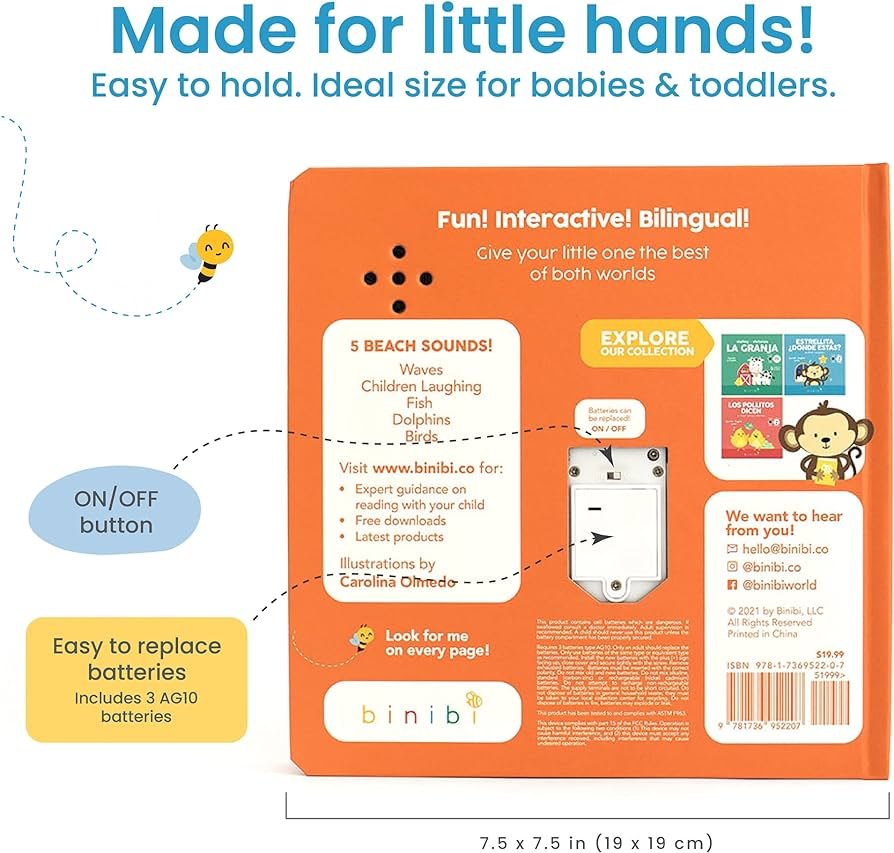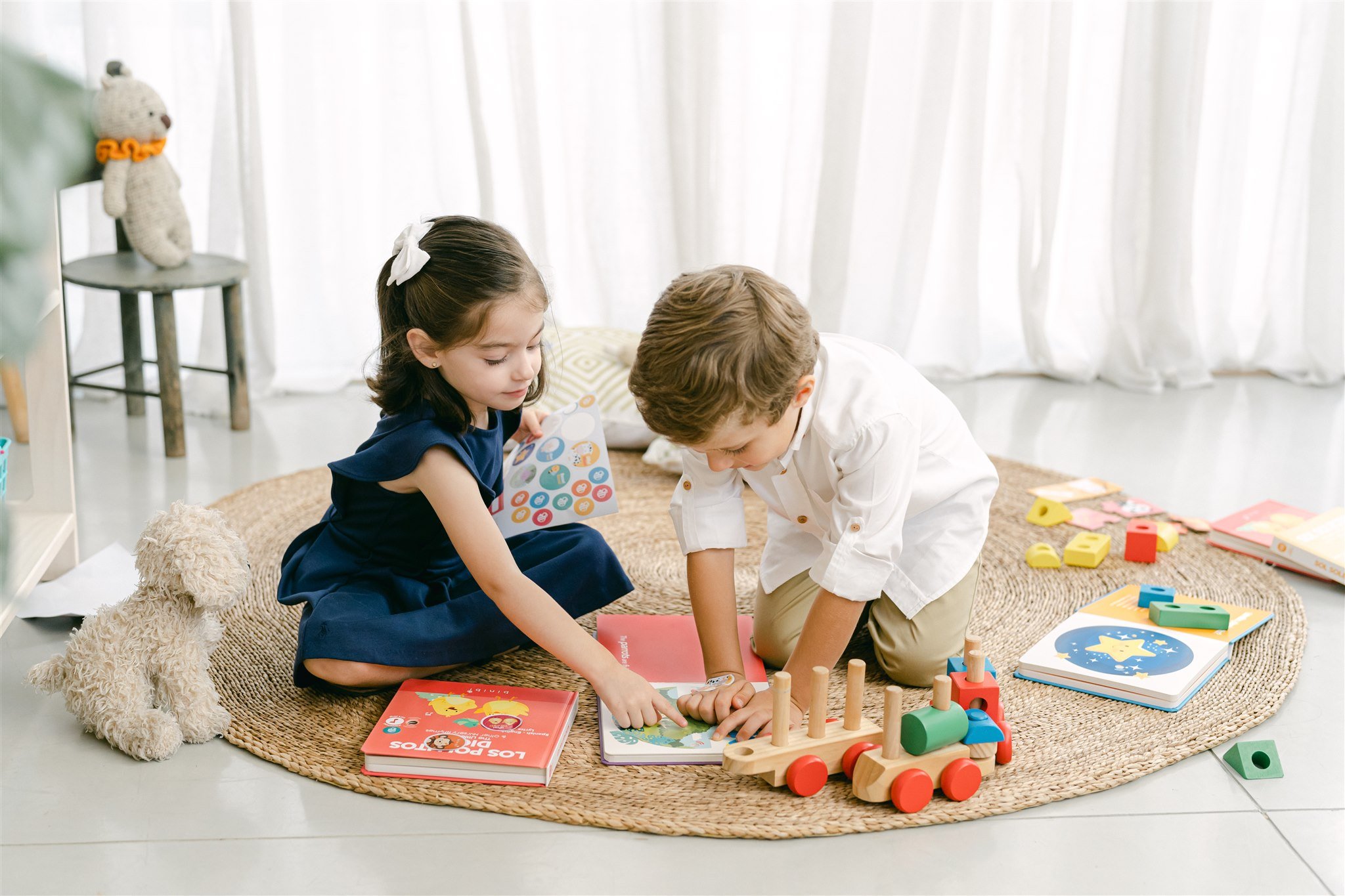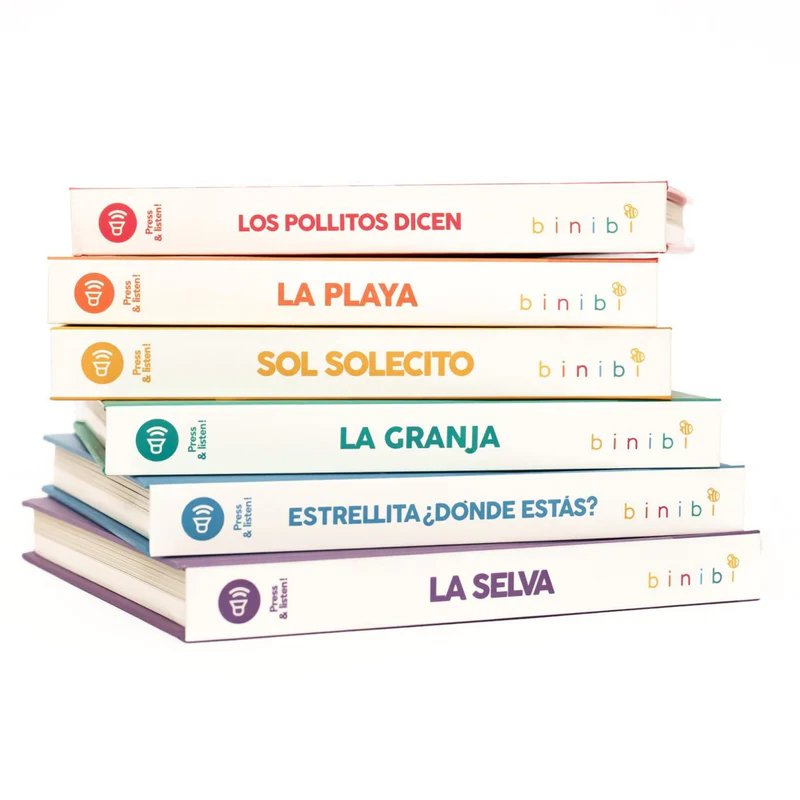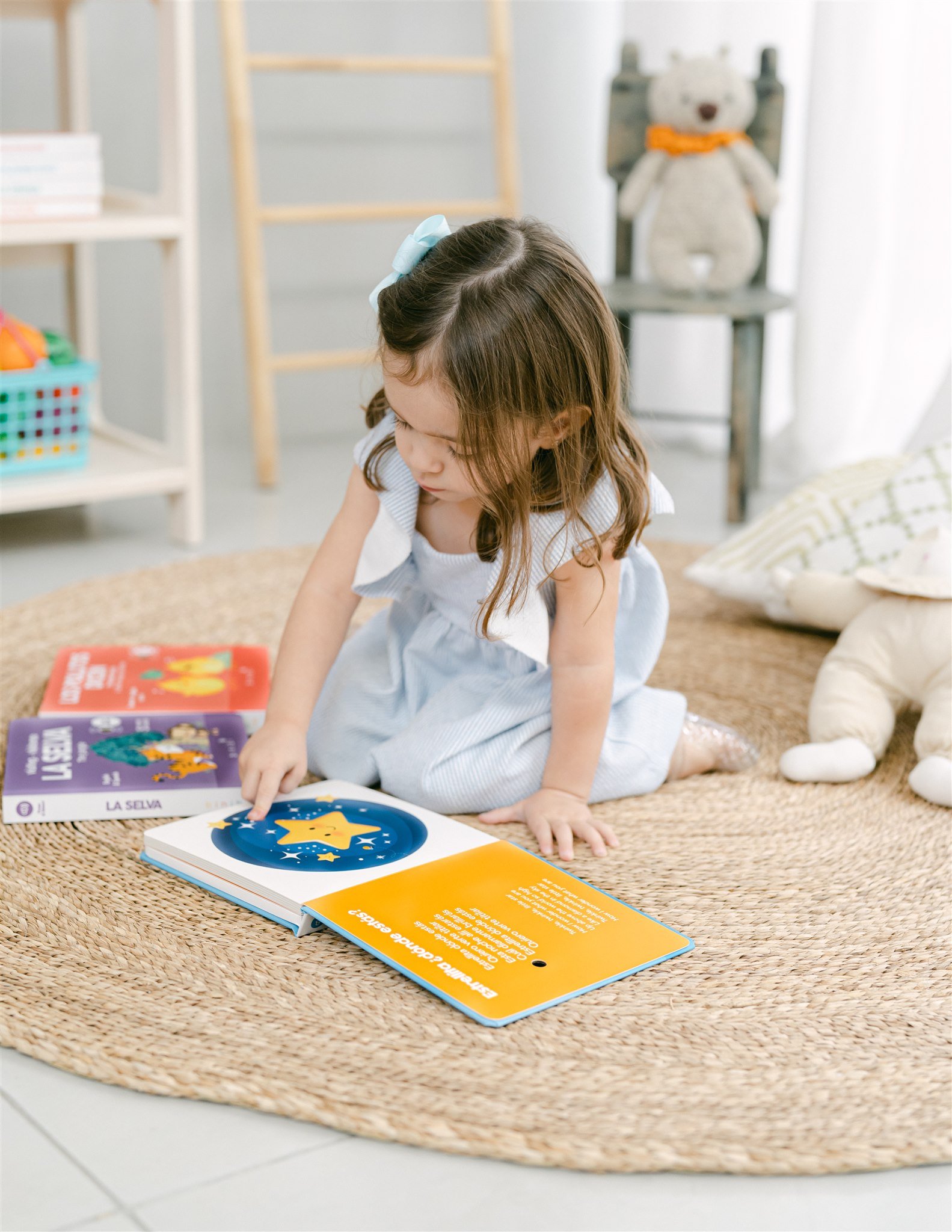5 Questions to Ask Your Child While Reading to Reinforce Bilingualism
Introduction by the CEO of TA-DA! Language Productions, Michelle Glorieux
Hello, dear readers, and welcome to Day 17 of our 20-day blogathon on all things children’s bilingualism!
So far, we’ve had the pleasure of sharing insights from experts on why, how, and when to introduce a second language, the role schools can play, and setting up a linguistically rich home environment.
Today, as we celebrate the spirit of Halloween, we have a special treat for you — no tricks, we promise! We're hosting a guest blog from Binibi, publishers of bilingual sound books for children. Now, you might wonder, "Aren't they your competitor?" To which I'd say: In the field of language learning, especially for our little ones, collaboration trumps competition! There is so, so much room for quality language-learning offerings for our children, and these women offer just that. (Not to mention their products are adorable!)
We at TA-DA! have always been passionate about revolutionizing language education for children, making it as engaging and effective as possible.
While our approach focuses on innovative, hands-on experiences that bring the spoken word of various languages to our children, Binibi emphasizes the importance of the written word in their bilingual books (alongside fun sounds and music), two areas we both agree hold monumental importance for childhood language acquisition.
So, without further ado, let's dive into Binibi's expert advice on enhancing your bilingual reading sessions with your children. They've prepared an incredibly informative post on
"5 Questions to Ask Your Child While Reading to Reinforce Bilingualism."
So, as we welcome Binibi to share their wisdom on bilingual reading, we encourage you to not just leaf through this post but to savor each word. Because tomorrow, we're diving deep into 'The Case for Books: Celebrating the Timeless Power of the Printed Word.' A must-read that explores everything from the neuroscience behind book reading to their environmental impact.
Happy reading - in all your languages!
Michelle Glorieux
Creator, TA-DA! Language Productions
5 Questions to Ask Your Child While Reading to Reinforce Bilingualism
This blog post is guest written by Binibi, publishers of bilingual sound books for children.
When looking to introduce a second language to a child, consistent exposure and practice are critical components to successfully achieve bilingualism. Daily reading is one of the most effective ways to practice a second language and reinforce new vocabulary at home in a fun and engaging way. Just as important as opening the book is having a dialogue with your child as you read together where you introduce and practice new target words, providing context in a way that makes their meanings extra clear and memorable. The best part about making the reading experience interactive is that you can give your child opportunities to hear and practice these new words as you discuss the details in a book.
As you look at the elaborate illustrations or listen to fun sounds in a book, like those found in Binibi’s sound books, asking your child questions is a great way to prompt him or her to use the new words they have learned or continue to hear them from their parents. It encourages the child to think and look beyond the words written in the book and observe other details, thus learning new words in the process.
Here are five questions to ask your child as you read together that will make the reading experience both fun and educational as you navigate practicing a second language:
1. Ask your child to count or about the colors on a page!
For example, ask a question like “How many monkeys can you see?” or “What color is the bird?” Not only is this a fun way to practice your child’s counting and color naming skills, but it challenges your child in a way that is exciting to them, opening the door to introduce words in their second language. Once your child responds, this is a great time to count back to them or introduce colors in the target language as well as reinforce how to say the element they are describing. For example, if the target language is Spanish and there are three monkeys like those found in Binibi’s La Selva book, you could say something like, “Si! Hay tres monos, ¡muy bien!”. While this game is more applicable towards an older toddler, it’s never too early to introduce numbers and colors to your younger child.
2. Ask your child what he or she observes in the images!
This can include questions that encourage your child to take a closer look at the illustrations, like “What is going on here?”, “What animals do you see?”, “What are they doing?”, “Why do you think the boy is sad?”, “What color is the horse?”. You can certainly ask these questions in the child’s second language if he or she will understand. Otherwise, another great way to reinforce the target language is by simply repeating their responses using words in the second language. For example, if your child says they see a cow, you can say, “That’s right! Una vaca (cow)”. You can even elaborate upon what he or she says to reinforce more words in the target language, by describing what the cow is doing, what color it is, or how many are in the image. The more you describe the image and elaborate upon your child’s responses using target words, the more exposure they’ll get over time, allowing them to truly learn the language!
3. Ask your child to locate specific elements in the illustrations, like a game of I spy!
Though your intention may actually be to practice words in your child’s second language, to the child, this just comes off as a fun game. Asking questions like, “Can you find the bee?” or “Where is the bee?” is a great way to make reading engaging and fun while also practicing the word of the element the child is finding in their second language. Binibi’s bilingual and interactive sound books intentionally include detailed illustrations that make it easy to interact with your child. In their books you’ll find a buzzing bee which is located in a different place on every page!
4. Ask your child what sound an animal or object makes!
This is particularly fun in books with soundswhere the child can press a button to reveal the correct answer. Not only does this make for a fun game, but it’s the perfect opportunity to reinforce the name of the object that makes the sound in the second language. For example, you can ask your child “What sound does the cow make?”, and follow up on their response with, “Good job! La vaca dice moo.” Though you are focusing on the sound it makes, you are also indirectly practicing vocabulary in a fun and engaging way! This is also a great way to get your child excited about reading and interacting with the book as they’ll be eager to press the buttons and see if their answer was correct. Binibi’s sound books are perfect for this as you practice different sounds and words alongside your child!
5. Ask your child if they remember something from their life and experiences that you see inside the book!
Relating a book to the child’s life has plenty of benefits! It provides context for new words, making their meanings clearer, as the child correlates what they are hearing and seeing in the book to the experiences they are discussing with the parent. The idea is that the next time they read the book or see those words in real life again, they will hopefully remember the new words and use them! This is also a great way to encourage parent-child interaction and bonding as they reminisce over shared experiences.
The next time you read with your child, try incorporating these questions with the goal of making the reading experience a richer, more interactive one and strengthening your child’s second language as you practice more vocabulary words together!
About Our Guest Contributors
Binibi, founded by two latina moms, Ana Sofia Guzman and Luciana Yarhi, makes educational and interactive bilingual sound books for children ages 0-3, seeking to fill the gap in bilingual products for children and provide parents with resources to support their bilingual parenting journey. You can find all of their books, as well as additional educational resources, here.
Today's thoughtful insights from Binibi offer invaluable tips on creating endearing reading experiences with our children.
Just this morning, as I shared a book with my 9-year-old using Binibi's strategies, it struck me—our kids are never too old to cherish these magical moments of connection. (This morning mine leaned his head on my shoulder - and at another moment, took my hand.)
As we edge closer to the culmination of our 20-day blogathon, we invite you to stay tuned for an especially meaningful post tomorrow that I have sent quite a bit of time and research preparing: 'The Case for Books: Celebrating the Timeless Power of the Printed Word.'
In it, we'll explore the undeniable power and irreplaceable value of books, from the ink on their pages right down to the experience of turning them. Alongside exploring the timeless allure of books and the scientific data that backs their importance, we'll dive into a question that many of us face:
How do you introduce a new language through books if you don't speak the language on the pages?
This very question inspired the creation of TA-DA! Talking Books.
Whether you're a parent, educator, or a lifelong learner, you won’t want to miss what we have in store.
I hope this post has inspired you to set aside time for reading tonight. Take your time, savor the moment, apply these tactics - and let us know what kind of endearing moments ensue!
Warmly yours in reading and bilingual education,
Michelle Glorieux







